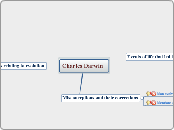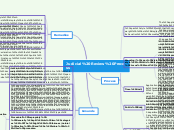Middle School Earth Science
2009 ODE Standards that are too low for 2014 Next Generation Standards (Embedded
6.1E.1 Describe and compare the properties and composition of the layers of the Earth.
ESS2 Earth's Systems
MS-ESS2-6
Develop and use a model to describe how unequal heating and rotation of the Earth cause patterns of atmospheric and oceanic circulation that determine regional climates.
8.1P.3 Explain how motion and spacing of particles determines states of matter.
MS-ESS2-5
Collect data to provide evidence for how the motions and complex interactions of air masses results in changes in weather conditions.
6.2E.1 Explain the water cycle and the relationship to landforms and weather.
8.2E.3 Explain the causes and patterns of atmospheric and oceanic movement and the effects on weather and climate.
MS-ESS2-4
Develop a model to describe the cycling of water through Earth's systems driven by energy from the sun and the force of gravity.
H.1E.2 Explain how Earth's atmosphere, geosphere, and hydrosphere change over time and at varying rates. Explain the techniques used to elucidate the history of events on Earth.
6.2E.1 Explain the water cycle and the relationship to landforms and weather.
MS-ESS2-3
Analyze and interpret data on the distribution of fossils and rocks, continental shapes, and seafloor structures to provide evidence of the past plate motions.
7.3S.2 Organize, display, and analyze relevant data, construct an evidence-based explanation of the results of a scientific investigation, and communicate the conclusions including possible sources of error.
8.2L.1 Explain how species change through the process of natural selection. Describe evidence for evolution.
8.2E.4 Analyze evidence for geological, climatic, environmental, and life form changes over time.
MS-ESS2-2
Construct an explanation based on evidence for how geoscience processes have changed Earth's surface at varying time and spatial scales.
7.3S.2 Organize, display, and analyze relevant data, construct an evidence-based explanation of the results of an investigation, and communicate the conclusions including possible sources of error.
H.2E.2 Explain how Earth's atmosphere, geosphere, and hydrosphere change over time and at varying rates. Explain techniques used to elucidate the history of events on Earth.
MS-ESS2-1
Develop a model to describe the cycling of Earth's materials and the flow of energy that drives this process.
H.2E.1 Identify and predict the effects of energy sources, physical forces, and transfer processes that occur in the Earth System. Describe how matter and energy are cycled between system components over time.
H.1E.2 Classify the bodies in our solar system based on properties and composition. Describe the attributes of our galaxy and evidence for multiple galaxies in the universe.
8.2P.2 Explain how energy is transferred, transformed, and conserved.
6.1E.1 Describe and compare the properties and composition of the layers of Earth
7.2E.4 Explain how landforms change over time at various rates in terms of constructive and destructive forces.
8.2E.2 Describe the processes of Earth's geosphere and resulting major geological events.
ESS1 Earth's Place in the Universe
MS-ESS1-4
Construct a scientific explanation based on evidence from rock strata for how the geological time scale is used to organize Earth's 4.6 billion year history.
8.2L.1 Explain how species change through the process of natural selection. Describe evidence for evolution.
8.1L.1 Explain how genetics and anatomical characteristics are used to classify organisms and infer evolutionary relationships.
7.2E.4 Explain how landforms change over time at various rates in terms of constructive and destructive forces.
MS-ESS1-3
Analyze and interpret data to determine scale properties of objects in the solar system.
New Content: Inclusion of scale, less of a focus on galaxy and universe and position of sun.
8.3S.2 Organize, display, and analyze relevant data, construct an evidence-based explanation of the results of a scientific investigation, and communicate the conclusions including possible sources of error.
6.1E.2 Describe the properties of the solar system. Describe and compare the position of the sun within the solar system, galaxy, and universe.
MS-ESS1-2
Develop and use a model to describe the role of gravity in the motions within galaxies and the solar system.
Galaxies are included in NGSS
7.2P.1 Identify and describe types of motion and forces and relate forces qualitatively to the laws of motion and gravitation.
MS-ESS1-1
Develop and use a model of the Earth-sun-moon system to describe the cyclic patterns of lunar phases, eclipses of the sun and moon, and seasons.
6.1E.2 Describe the properties of objects in the solar system. Describe and compare the position of the sun within the solar system, galaxy, and universe.
8.2E.1 Explain how gravity is the force that keeps objects in the solar system in regular and predictable motion and describe the resulting phenomena. Explain the interactions that result in the Earth's seasons.
ESS3 Earth and Human Activity
MS-ESS3-6
Ask questions to clarify evidence of the factors that have caused the rise in global temperatures over the past century.
Subtopic
8.2E.4 Analyze evidence for geological, climatic, environmental and life form changes over time.
MS-ESS3-4
Construct an argument supported by evidence for how increases in human population and per-capita consumption of natural resources impact Earth's systems.
Grade 8 ODE 2014 Standard
Partial Alignment
MS-ESS3-3
Apply scientific principles to design a method for monitoring and minimizing a human impact on the environment.
Grade 6 ODE 2014 Standard
H.2E.4 Evaluate the impact of human activities on environmental quality and the sustainability of Earth's systems. Describe how environmental factors influence resource management.
6.3S.1 Based on observations and science principles, propose questions or hypotheses that can be examined through scientific investigation. Design and conduct an investigation that uses appropriate tools and techniques to collect relevant data.
6.4D.2 Design, construct, and test a possible solution to a defined problem using appropriate tools and materials. Evaluate proposed engineering design solutions to the defined problem.
Strong Alignment 2009 ODE Standard
7.2E.3 Evaluate natural processes and human activities that affect global environmental change and suggest and evaluate possible solutions to problems.
7.2E.2 Describe the composition of the Earth's atmosphere, how it has changed over time, and implications for the future.
MS-ESS3-2
Analyze and interpret data on natural hazards to forecast future catastrophic events and inform the development of technologies to mitigate their effects.
8.2E.4 Analyze evidence for geologic, climatic, environmental, and life form changes over time.
Engineering Design
7.4D.3 Explain how new scientific knowledge can be used to develop new technologies and how new technologies can be used to generate new scientific knowledge.
New Content
"Inform the development of technologies"
MS-ESS3-1
Construct a scientific explanation based on evidence for how the uneven distributions of Earth's mineral, energy, and groundwater resources are the result of past and current geoscience processes.
Grade 7 ODE 2014 Standard
Partial Alignment 2009 ODE Standard
Science Inquiry
7.3S.2 Organize and display relevant data, construct an evidence based explanation of the results of an investigation, and communicate conclusions.
7.2E.1 Describe and evaluate the environmental and societal effects of obtaining, using and managing waste of renewable and non-renewable resources.









